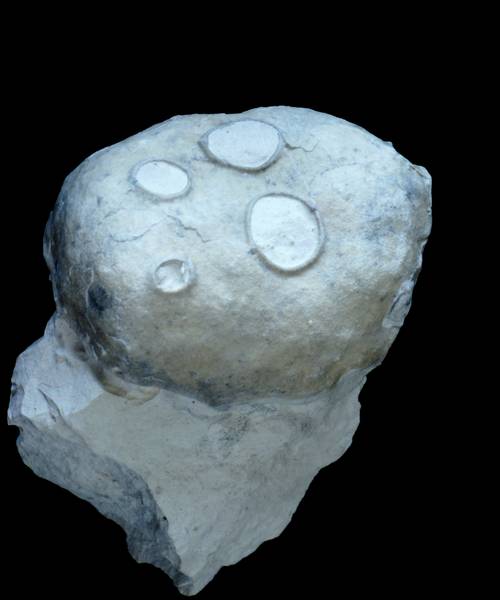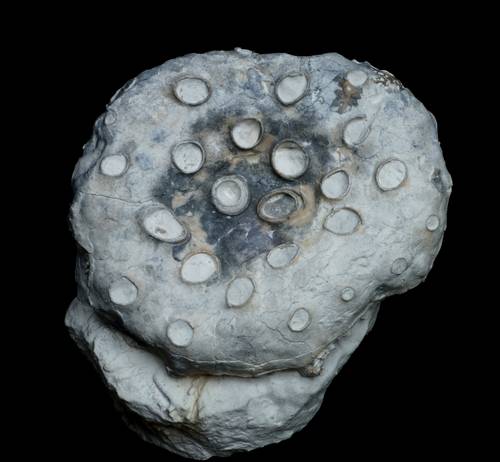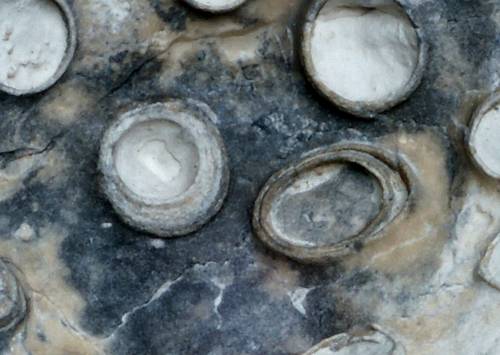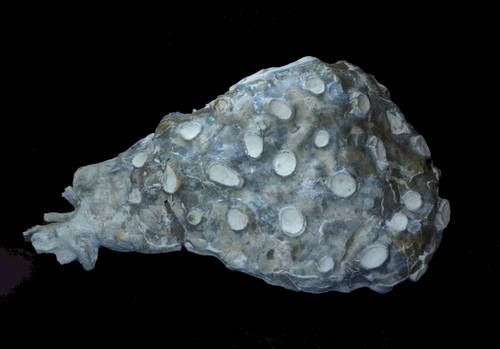

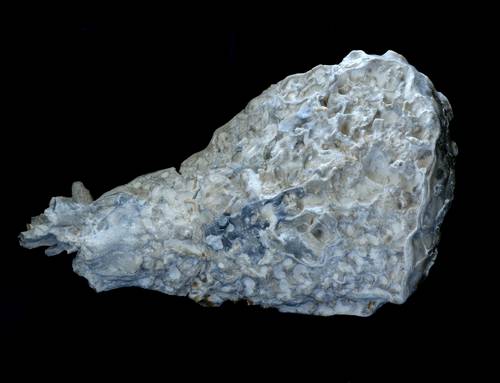
Tremabolites megastoma
Roemer 1841
Tremabolites megastoma is a lumpy to cushion- or mushroom-shaped sponge with very characteristic, large (10 mm) oscules scattered over the upper surface. The oscules have a slightly protruding rim. The upper part of the sponge is covered by a dense, smooth, siliceous membrane, ending abruptly in an edge along the perimeter, which probably represents the former water-sediment-interface. The underside is very rough and usually obscured by adherent sediment.
Three views of the same specimen (top, side, bottom).
Notice the root-like process on the left side. It appeaers that these roots intruded into the sediment at a shallow angle, and that the sponge was actually resting on its rough underside. Such lateral roots have been observed only with specimens from the Upper Campanian, not from the Lower Campanian. Tremabolites megastoma is thus essentially an encrusting species.
